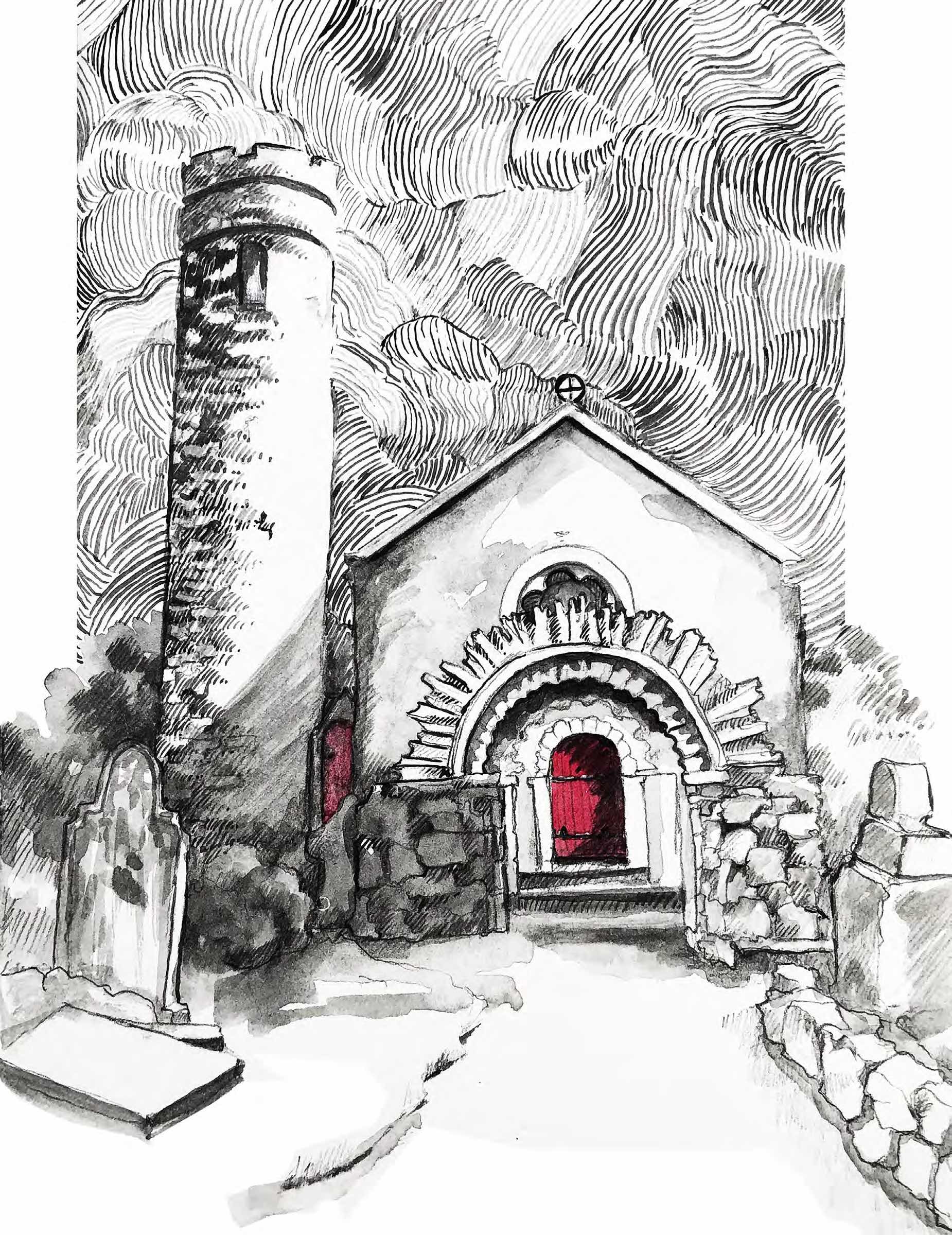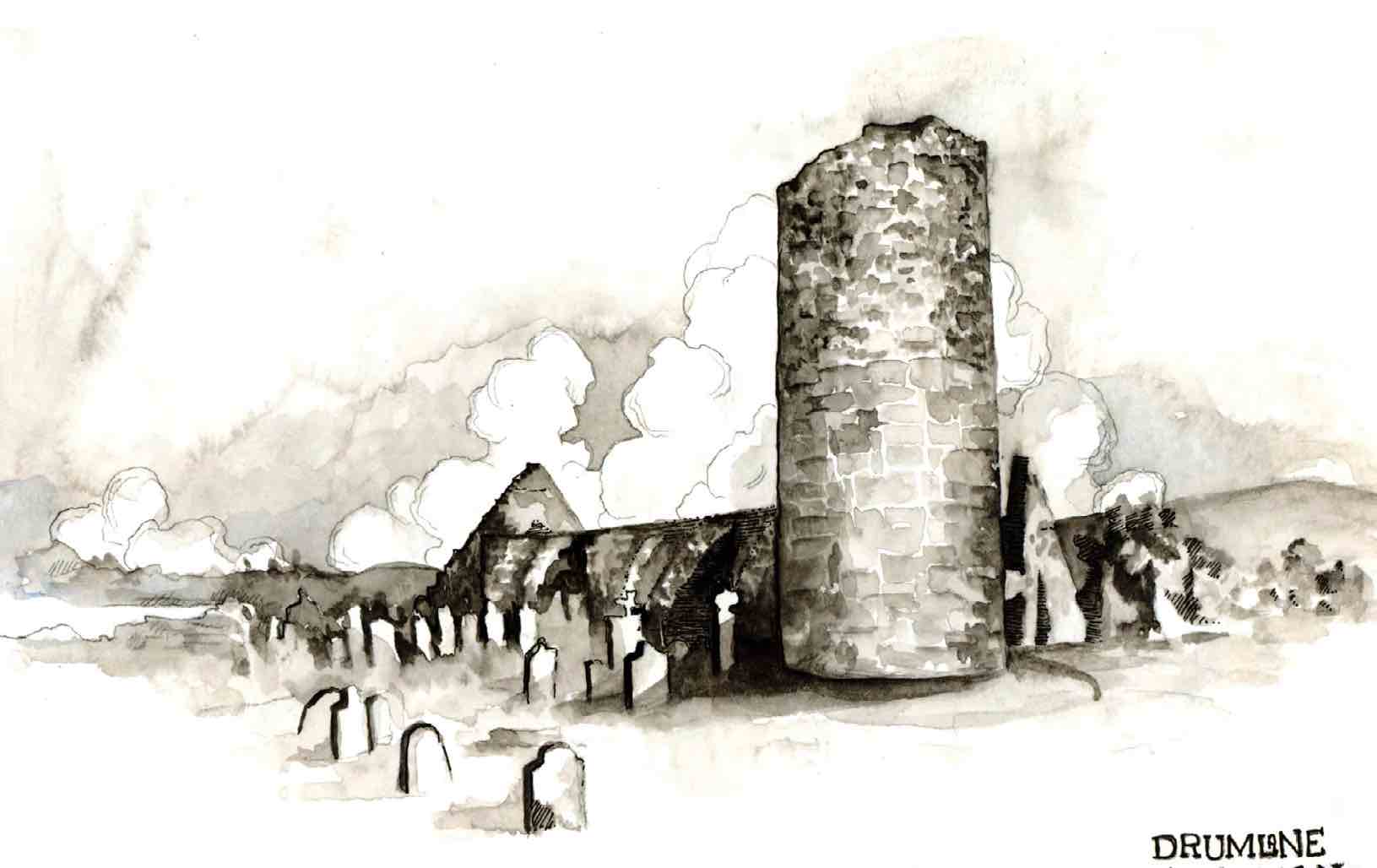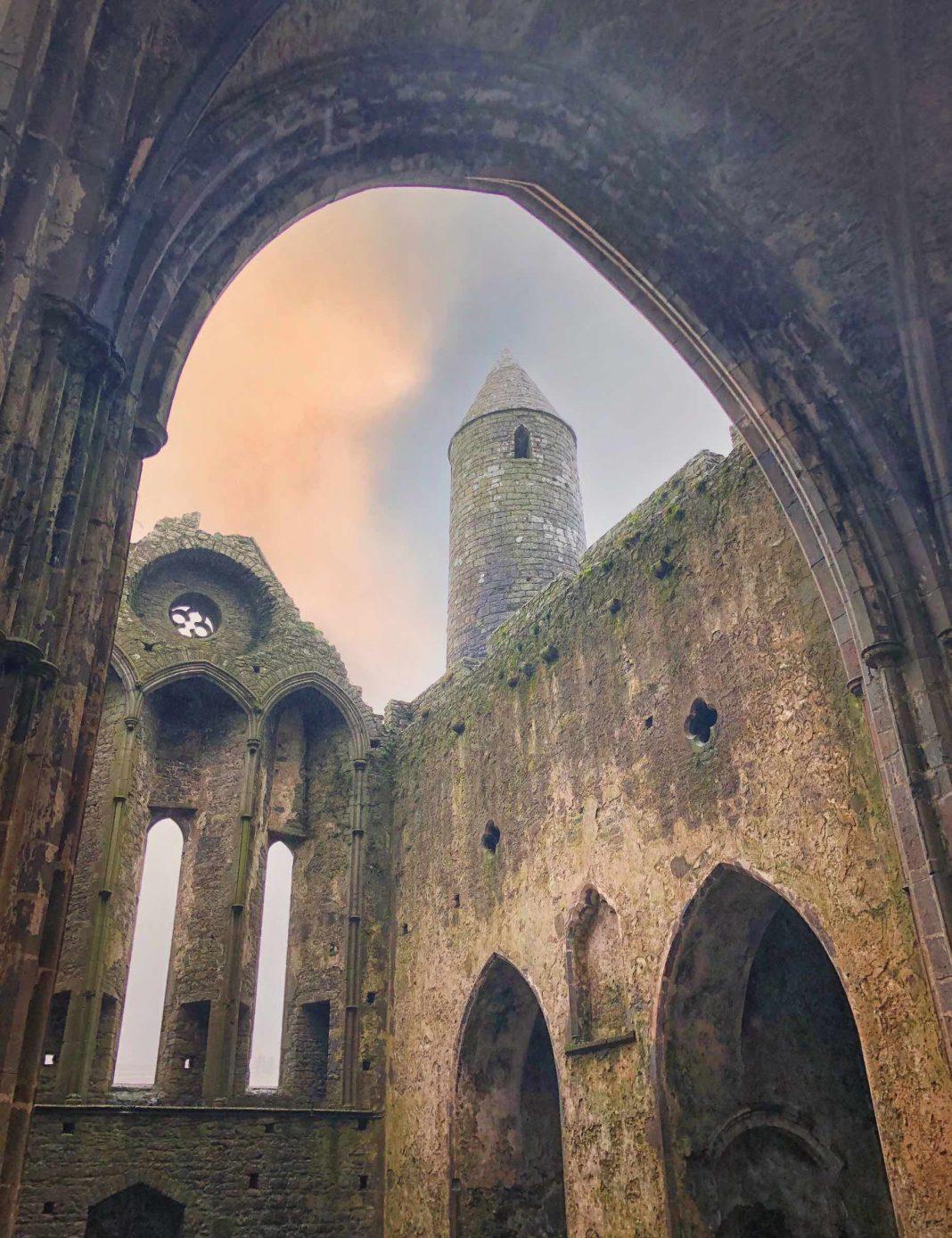There are a few things about Ireland that you can always rely on: It will always be damp, the vegetable of the day will always be potato, and there will always be an ancient castle or church nearby that you can have the pleasure of gazing upon—after you pay your eight-euro entry fee. Scattered across the emerald green hills, islands, and estuaries of Ireland and Northern Ireland, however, are also the remains of sixty-six round towers. These mysterious structures were built from the 7th to 10th centuries AD, making them older than most of those castles and church ruins. And in most cases, they are free to visit.
Many of the tower sites were considered sacred places long before the arrival of Christianity in Ireland. Professor Philip Callahan, an expert on the towers, suggests that their seemingly random geographical arrangement actually mirrors the positions of the stars in the northern sky at winter solstice. These facts and others intrigued me. The more I read about the towers and their puzzling origins, the more compelled I felt to see them for myself.
With maps, guide books, and GPS coordinates spread across the dining room table, I began to plot a route that would take me to each of the sixty-six tower sites. With all this planning,
I was worried both that I wouldn’t complete my mission and that in its pursuit I wouldn’t leave room for all the chance happenings and encounters that give travel its depth and dimension. My edict for this journey: Leave room for magic.
Nothing quells my enjoyment of being abroad more quickly than the presence of other people who are enjoying being abroad, especially if they are doing the enjoying loudly and in an American accent. So as an added layer of protection against the tour bus set, I decided to visit in January, when the Irish weather is so foul that half of the tour bus operators are busy getting sunburnt in Florida while the other half are crisping up on the Costa del Sol.
Having lived in the Pacific Northwest for more than twenty years, I felt fully prepared for the Irish winter. I am an avid outdoor adventure enthusiast accustomed to eight months of rain a year, and according to my recent send-away DNA kit, I’m also part Irish (along with roughly 75 percent of Americans and all of Boston—yes, even the cats). Additionally, there are North Face and Eddie Bauer outlet stores near me and if they can’t prepare a person for a couple of months of winter walking, what can? With my annotated maps, sketching supplies, and a backpack full of discounted rain gear, I arrived in Ireland.
As the plane disgorged and I made my way down the mobile staircase at Dublin airport, my jacket flapped about my face viciously and it occurred to me that the one thing I had not adequately prepared for was the wind. I was also woefully unprepared for a nightmare called “the slurry,” but we will get to that a bit later.
My original itinerary included all sixty-six sites, but I can tell you now that a few of the tumbled-down towers I visited were so overgrown and decrepit that one could eliminate them from an “official” list. But the forgotten and neglected sites were also among the most enchanting: At least one tower is now occupied by a family of badgers, as I discovered while doing some evening sketching in Galway. These were the charming black-and-white badgers, not the scruffy dun-colored ones that fight bears for fun and are regularly featured in “Would you rather?” games.
While some towers are in great condition or have been restored, others have become casualties of time, lightning, fire, marauders, Cromwell, and other atrocities. Some are in cities, others adjacent to well-trafficked tourist destinations: the round tower on the Rock of Cashel, for example, and the tower at Glendalough, a site of outstanding natural beauty, as the signs will inform you. Nestled in the majestic Wicklow mountains, Glendalough sees enough traffic to merit its own tour-bus-size parking lot.
But my journey began with my trudging up a muddy hill, looking for a tower near Drogheda—“Ah, you mean Draaaaww-daaahhh,” a young woman corrected my pronunciation when I stopped to ask for directions at one of the baffling combination post office, mini-mart, coffee shop, gas stations you find in the countryside. I’d had to repeat myself several times before the girl—with her tangerine-colored hair in a scraped-back ponytail and a gold necklace that said “baby girl” in bubble letters—could make sense of what I was saying.
A sign outside advertised coffee, so I asked baby girl for one of those and she unceremoniously pointed to a hot beverage machine in a corner. It was next to a dusty condom dispenser. In that moment, I was sorely disappointed, but in the coming weeks I’d come to appreciate these ubiquitous if uninspiring contraptions—hot beverage machines, not condoms, though I think we can all agree on the utility of the latter—if nothing else because they gave me an excuse to take refuge from the wind and chat up truck drivers, an activity I always enjoy.
Back out in the rain with the brisk wind violating my face holes and forty-odd pounds of stuff strapped to my back, I set about trying to locate the first tower. I was squinting through the rain at a hand-drawn and now very wet paper map when a battered vehicle—more tin can than car—pulled up beside me.
A tiny red-faced man leaned across the passenger seat, where a tree was primly seated, and flung the door open. He began to shout at me, his face florid, his gestures as incomprehensible as whatever was coming out of his mouth.
The whole situation was disconcerting. Most people would just lower the window to do their shouting, and they would likely not have a tree riding shotgun—not a branch, a whole tree. I believe it was an aspen. Being winter, it was mostly leafless, its root bulb tucked into a burlap sack, perhaps for the sake of modesty.
The man’s accent was broad, which generally means “unintelligible unless you were born in the same village as the person speaking.” Given the context I could only assume that he was offering me a lift. Why he was so angry about it, I couldn’t tell you. I considered accepting—the wind had now gotten to second base and I was not feeling meteorologically amorous. But the car was a two-door affair, and the tree clearly had dibs on the front seat. I’d have to climb past or over the thing with my awkward backpack to access the rear seat, which was full of potatoes: Not potatoes in sacks but naked potatoes (a notoriously immodest tuber, the potato). They were rolling around on the floor, the back seat, the back window—just a very substantial number of potatoes.
I declined the offer. I tried to explain that I was on a walking trip, visiting round towers. He shook his tiny red fist at me. I needed the exercise, I said, trying to frame this situation as a
“weight-loss journey.” My would-be Samaritan seemed incensed by this statement. He threw up his little red arms and babbled something to the tree, which agreed that I was a complete idiot. I awkwardly wrangled the aspen branches back into the vehicle as politely as possible and shut the car door. I smiled stupidly and waved as they drove away. In the back window the nudie potatoes taunted me, rolling about dry, jolly, and safe from the advances of the wind.
As I walked on, I pondered the encounter and wondered if I had just failed to leave room for magic. Potato gnome is a thing, right? Replace the rusty car with a dilapidated horse cart and that encounter was clearly the set-up for some kind of fairy tale. I vowed then to set aside my idea of tackling this project on foot. If an angry gnome wanted to give me a ride, I’d accept. Yes, I might be turned into a potato, but I’d probably learn a lot from the experience.
Approximately three minutes later I climbed into a white Range Rover driven by Rebecca, an interior designer from Cork. She had expensive-looking silvery hair cut into a stylish bob, and she was wearing a cashmere tracksuit. (I still think about that tracksuit from time to time; it looked very soft.) This Irish Gwyneth Paltrow had no vegetal friends on board, but we did have a nice conversation about round towers, and she conveyed me to my destination in all the comfort a modern luxury SUV can provide. Heated leather seats, I decided, are a kind of magic.
In the two months I spent chasing the towers, this would happen again and again. I couldn’t walk any significant distance without someone stopping to offer me a lift. If I paused in a pub to ask for directions, some kind soul would pop up and offer to take me on their motorcycle, or tractor, or boat. I was even extended the use of a “courtesy donkey” in County Donegal, which, I assume, is the one you ride if your regular donkey is in for repairs. While the land in Ireland is undoubtedly full of magic, it is the people I found most enchanting. Again and again they proved themselves welcoming, generous, and kind.

The round towers themselves were a point of connection with many of the people I encountered. The towers are broadly dispersed throughout the country and everyone has one in their village or on their grandparent’s farm, or behind the dilapidated glove factory where they once accidentally had sex with a second cousin on their mother’s side (as told to me by a guy we will call Ian).
I spent a few days in the village of Donore (neighbor to the aforementioned Drogheda), a place I chose based on its proximity to a cluster of towers—Donaghmore, Inniskeen, Dromiskin, Duleek, and Monasterboice. When I told the very fine folks at the local pub about my project, they offered to help. A lovely fellow named Smasher drove me out to the Donaghmore tower and along the way told me a fascinating story about raising American turkeys. Unfortunately, I cannot relay that tale here because his accent was even broader than the potato gnome’s and the only two words I understood all day were “American” and “turkey.” We had a grand old time nonetheless.
Traveling from county to county I encountered many folks speaking Irish while others spoke English with varied accents and speech patterns. Some folks were difficult to understand while others spoke in lyric, lovely rhythms or in ways that were unexpectedly comic and profane. Any adjective, for example, can be turned into a pejorative by adding the letter y. Bald becomes baldy, as in, “never go to the old glove factory with that big baldy fellow.” I also found their aptitude with curse words to be quite amusing, if at times also shocking. I’m not saying that all Irish folks curse compulsively; I just happened to come across some real champions. It is possible that this was a sampling bias based on the amount of time I spent drinking coffee next to condom dispensers.
As January came to a close, I had visited thirty-one of the sixty-six towers and had seen dozens of cities, towns, and villages and hundreds of miles of Ireland and Northern Ireland. I felt optimistic about finishing in the time I had allotted myself. It was at that point that the weather took a turn toward true unpleasantness. Several big snowstorms, the kind with alphabetically determined names and gale-force wind ratings, swept through, and the Emerald Isle was swathed in snow.
I continued to trudge through the snow and sleet, but several of my towers were on islands, and each day I called round to the ferry offices only to be told that all boats were canceled. On the shore of Lough Erne in County Fermanagh, I tried to track down an audacious tour-boat operator that I’d heard about in a Reddit forum. It was rumored that in exchange for a bottle of whiskey and gas money he would take you out to the tower on Holy Island, no matter the weather. When I arrived, I was informed at the local pub that I’d just missed him. Apparently he had “fecked off to Costa del Sol,” the day before.
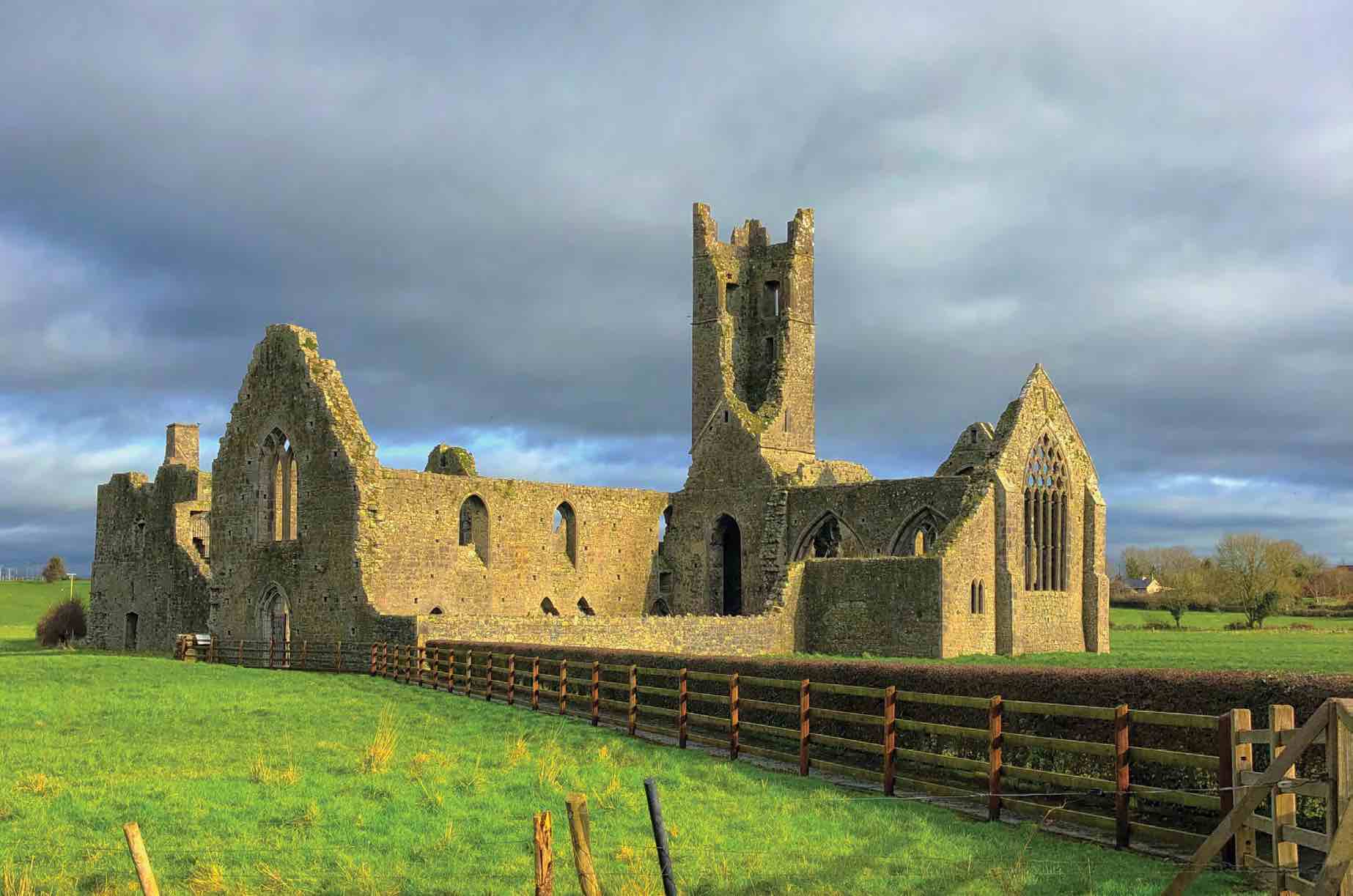
It may seem that “the local pub” is a recurring theme in this story, and indeed in most Irish travelogues. If you haven’t had the pleasure of traveling in Ireland or Northern Ireland, you may have the impression that it is a land of dyspeptic bar dwellers and chronic alcoholics. But that isn’t the case. Every town undoubtedly has its drunks, but I’ve never encountered, for example, a people more reluctant to drink and drive (or drinkdrive, as they perplexingly call it). Much like the post office, the pub is a multiuse institution: equal parts gathering place, music venue, information center, gossip hub, and vegetable-of-the-day dispensary. No matter where I was in my ramblings, when I’d show up cold and wet and frequently lost, it was never awkward to order a pot of tea and sit by the fire. I never felt unsafe or unwelcome and when I really needed help, like that ill-fated February afternoon when I learned about the slurry, it was the folks at the pub that I turned to.
Ireland has a robust tourist industry, but it is also a working agricultural economy. These two things co-exist fairly amicably. After all, tourists love sheep dogs and wooly lambs and adorable donkeys. You can even “meet a craggy faced Irish farmer” as an AirBnB experience. But agriculture can be quite a smelly affair. Odiferous animal husbandry waste products are secreted away in large vats, and as they break down, they become a foul soup that is called the slurry. There are complex rules that govern where and when the farmers can suck the poo-goo into tanker trucks and drive it out into the fields to be dispersed via high-powered hose, and I was right on time.
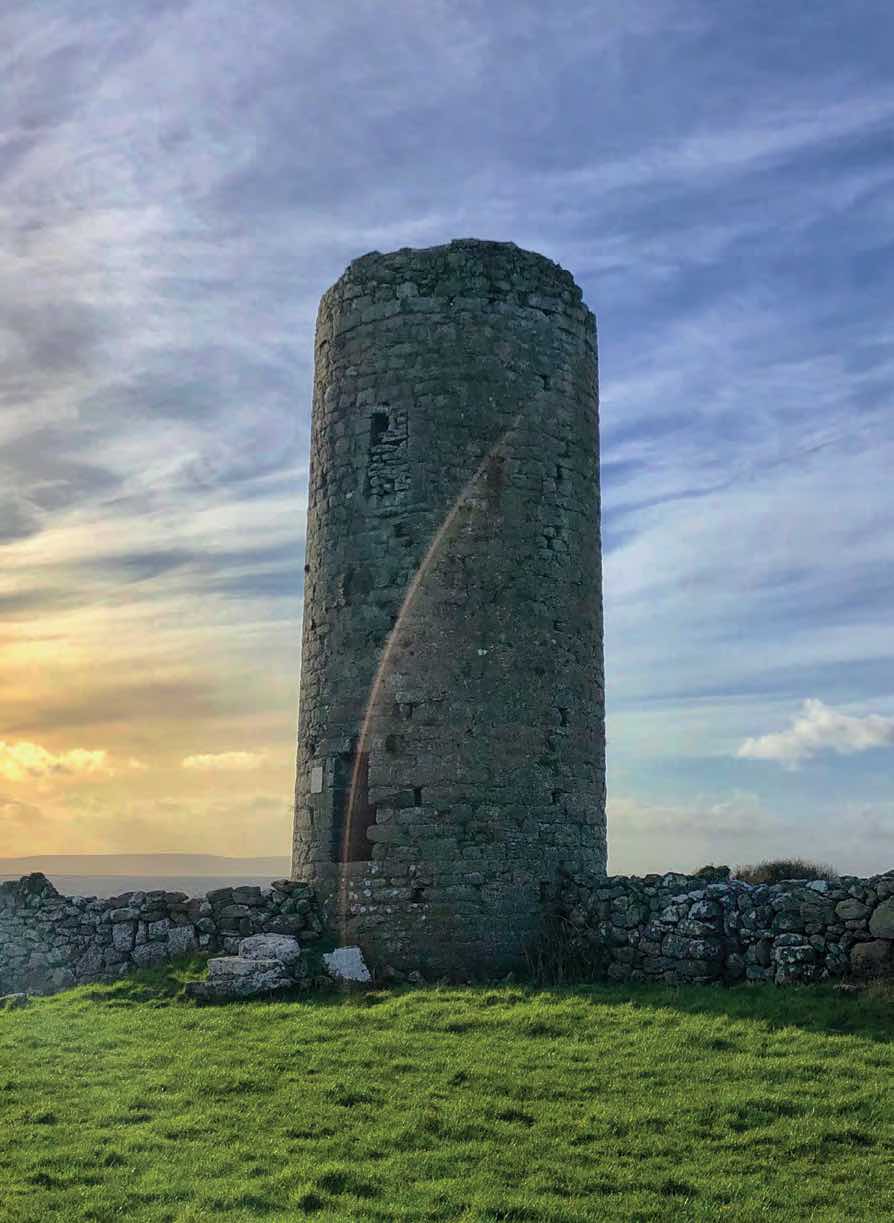
The afternoon was cold and clear, the wind brisk but tolerable. My tower for the day was in the middle of a field in County Tipperary, one of Ireland’s more agricultural areas. The sun was casting at a slant through the silver shimmer of low-lying clouds, and the snow-powdered fields glowed with winter light. I tromped up a hill from the ruined tower with the intention
of doing a quick sketch. I sheltered behind a large boulder and began to work. When I heard the truck coming, I assumed it was a tractor and, crouched down as I was behind a boulder, the driver never saw me. By the time I realized they were spraying, it was too late to run.
I stood up in a panic and opened my mouth to yell out. What was I intending to say? Please don’t spray me with shhhhiiiiiii? We will never know … the words were literally drowned out by a high-powered head-to-toe dowsing with a substance the thickness and texture of lentil soup. “It’s in my mouth,” was my first thought as I began to gag. “Oh no, my eyes,” was my second thought, and my eyes began to vomit, which is something I didn’t know they could do.
My waterproof outfit was dripping with the fetid paste, but it was my face that had gotten the worst of the drenching. I stumbled down the hill convinced bacteria were eating my eyeballs. There was a little pub at the bottom of the hill and when I pushed the door open three elderly men turned to look at me. I stammered desperately, “Do you have a hose?” All three of the good fellows sprang into action. A faucet and hose were located at the combination donkey repair shop–bakery next door. As I stood in the thin February light, three amiable strangers hosed fermented feces out of my mouth, and I marveled, once again, at the hospitality of the Irish. They really are the nicest people. Perhaps, I thought in that moment, they will help me burn my clothes and also my hair.

In the end I made it to only sixty-two of the sixty-six towers on my list. While the weather prevented me from getting to the last of the sites, it was COVID border closures that sent me home before I had finished my quest. The four towers I have left—Devenish, Inis Cealtra, Scattery, Tory Island—all require boats and are probably best visited in the warmer months. As I write this, I am plotting my return. My next visit will be a different kind of journey, slower and more meandering. I’ve stayed in touch with many of the kind folks I met, and I have people to see and donkeys to check on. I’d like to go back and thank those fellows at the pub that saved me from the slurry, have a drink with Smasher, and see how it’s going with the turkeys.
When you are planning your next adventure, consider the round towers and all the beauty Ireland offers. And wherever travel takes you, near home or far, remember to leave room for magic. Additionally, if anyone knows where I can get one of those cashmere tracksuits, please drop me a line.
Follow Siolo Thompson on Instagram @siolothompson.
